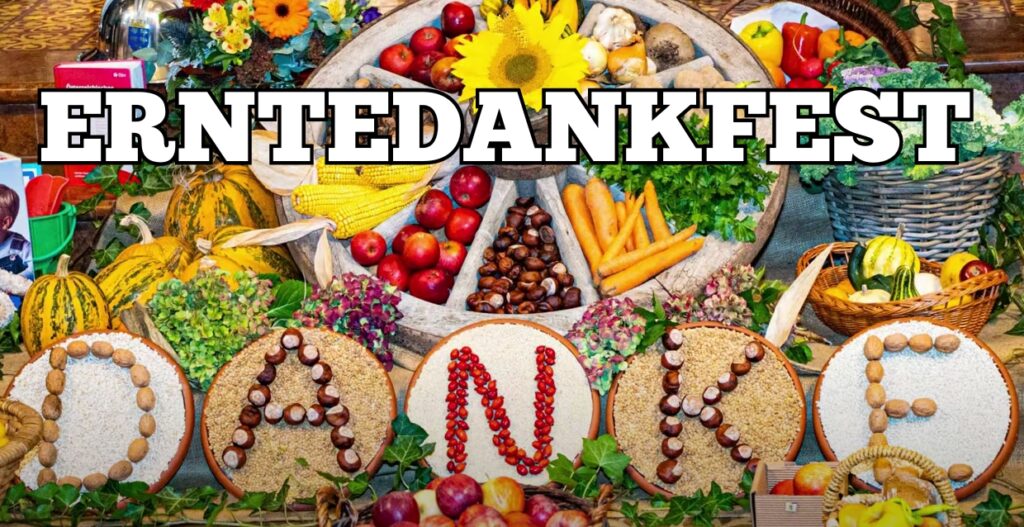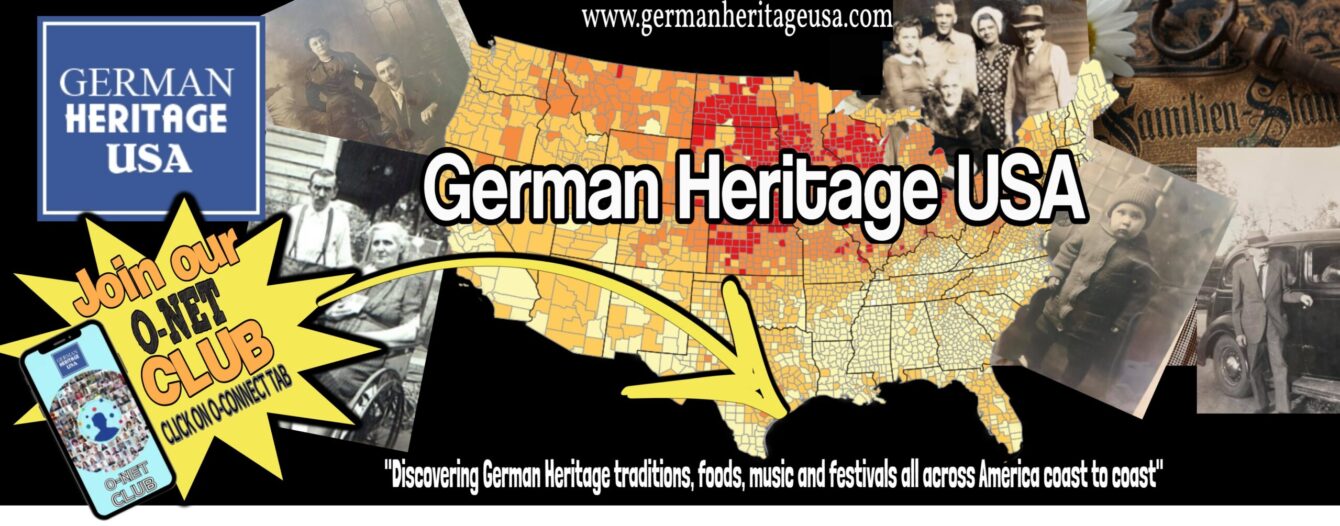Harvesting Gratitude: Exploring the Rich Traditions of Erntedankfest, Germany’s Thanksgiving
GERMAN HERITAGE USA | AFFILIATE DISCLAIMER: This post may or may not contain affiliate links which means we may receive a commission for purchases made through links. We will only recommend products that we have personally used or that we truly trust. Learn more on our Private Policy and Disclaimer Page located under our Terms Of Service tab above.
We are already in the autumn month of November and if you think that you are just in time to learn about Germany’s Thanksgiving… sorry you missed it already.

Erntedankfest, the German equivalent of Thanksgiving, is a joyful celebration of the harvest and a time to express gratitude for the year’s bounty. While the exact date varies depending on the region, it is typically held in September or October and sometimes into early November.
In some parts of Germany, Erntedankfest falls on the first Sunday in October, often coinciding with the first Sunday following Michaelistag or Michaelmas (September 29th). In other regions, the celebration takes place on the first Sunday in November.
Just know that in the heart of Germany, nestled between the golden hues of September and October, lies a celebration that echoes with the same spirit of gratitude as its American counterpart.
Erntedankfest, known as Thanksgiving in Germany, is a festival that transcends time, weaving together ancient roots and modern traditions.
Join us on a journey through the bountiful fields of Erntedankfest, exploring its origins, traditions, and the vibrant tapestry of symbols that define this festive occasion.
Origins: A Tapestry Woven in Time
Erntedankfest and Thanksgiving share a common ancestry rooted in pre-Christian harvest festivals. In Germany, pagan celebrations marked the culmination of the harvest season, a time to express thanks to the gods for their benevolence. Similarly, Native American tribes in America held harvest festivals to honor their deities and show gratitude for the abundance of the land.

The tapestry of Erntedankfest unravels itself from the 17th century when Protestant churches in Germany organized harvest festivals. This tradition ripened and spread across the country, turning into a nationwide celebration by the 19th century. Thanksgiving, on the other hand, sprouted from the 1621 harvest feast shared by English Pilgrims and Native Americans in Plymouth, Massachusetts, later gaining official recognition as a national day of thanks in 1863 through President Abraham Lincoln’s proclamation.
Traditions: A Feast for the Senses
Picture this: in Germany, roast goose, potato dumplings, and red cabbage adorn the festive table. Meanwhile, across the Atlantic, the aroma of turkey, stuffing, mashed potatoes, and cranberry sauce wafts through American households. Both Erntedankfest and Thanksgiving are marked by these traditional feasts, tantalizing the taste buds and bringing families together in the spirit of gratitude.
Religious observances are a vital ingredient in both celebrations. In Germany, Erntedankfest church services resonate with hymns of thanksgiving and prayers for a bountiful harvest. Similarly, Thanksgiving in America sees many attending church services to express gratitude for the blessings received.

Community gatherings are the heartbeat of these celebrations. In Germany, Erntedankfest bursts into life with parades, folk dancing, and harvest festivals. On the other side of the world, Thanksgiving is a time for families and friends to gather for meals, football games, and cherished holiday traditions.
Harvest: A Shared Symphony of Gratitude
At their core, Erntedankfest and Thanksgiving are harmonious celebrations of the harvest. Both express profound gratitude for the fruits of the land and the tireless work of farmers who toil to bring sustenance to our tables. These festivals serve as poignant reminders of our interconnectedness with nature and the imperative of sustainable agriculture.

Erntedankfest Traditions: A Symphony of Joy
The vibrant celebration of Erntedankfest is accompanied by a symphony of traditions that enchant the senses:
- Church Services: Many partake in Erntedankfest church services, offering thanks for the bountiful harvest.
- Parades: Towns and villages come alive with parades featuring harvest kings or queens, adorned floats boasting a cornucopia of fruits, vegetables, and flowers.
- Feasts: Families and friends gather for feasts featuring traditional German delights, from succulent roast goose to hearty potato dumplings and tangy red cabbage.
- Dancing and Music: The festivities are incomplete without the joyous rhythm of dance and music, creating an atmosphere of pure jubilation.
Erntedankfest Symbols: A Visual Feast
As we delve into the symbols of Erntedankfest, a visual feast unfolds:
- The Harvest Crown: Woven from wheat and grains, the harvest crown symbolizes abundance and fertility. Worn by the harvest queen or king, it is a living testament to the richness of the season.
- The Cornucopia: An overflowing horn of plenty, the cornucopia is a symbol of the harvest’s abundance, promising a feast of plenty for all.
- Fruits and Vegetables: Decorating churches, homes, and floats, fruits and vegetables stand as vibrant symbols of the harvest’s bounty, a testament to the beauty and abundance of the Earth.
Erntedankfest Today: A Tapestry Unfolding
In modern Germany, Erntedankfest remains a cherished celebration, a time for communities to unite in gratitude for the year’s bounty. It’s a moment to acknowledge the dedication of farmers and the vital role of agriculture in sustaining life.

As we navigate the rich tapestry of Erntedankfest, we discover more than a mere festival – it’s a living narrative, a story woven into the fabric of time, connecting generations in a dance of gratitude.
So, as the fields of Germany brim with the golden glow of autumn, let’s join hands and celebrate Erntedankfest, a festival that transcends borders and brings people together in the timeless embrace of gratitude.
